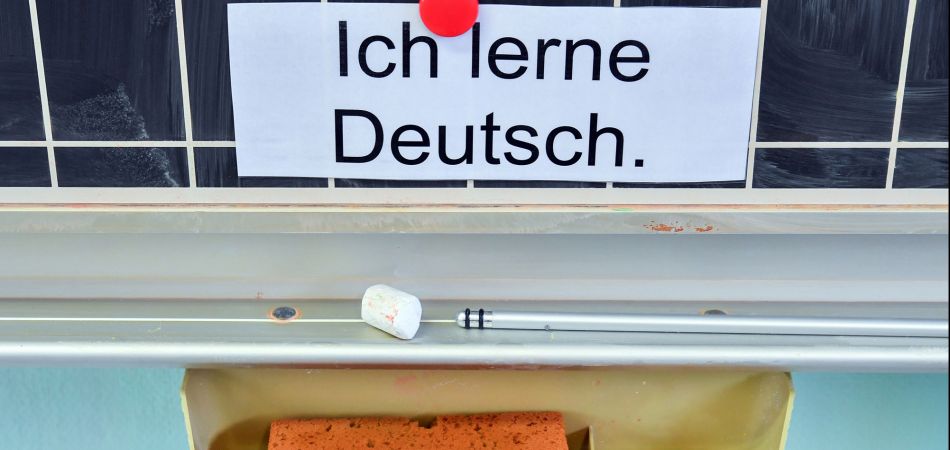4 Cases In German Language
Nouns:Substantive
The biggest difference between German personal pronouns and English personal pronouns is that you have to distinguish among three ways to say you: du, ihr, and Sie. Other personal pronouns, like ich and mich (I and me) or wir and uns (we and us), bear a closer resemblance to English. The genitive case isn’t represented. See full list on iwillteachyoualanguage.com.
Nouns describe people, animals, things, concepts and ideas. Just as in English, German nouns can be common or proper, count or mass, singular or plural. German nouns, however, have two additional characteristics: they are always capitalized and they can be masculine, feminine or neuter:
Common vs. proper nouns
Common nouns refer to a general person, animal, object or concept.
| der Korb | the basket |
| das Mädchen | the little girl |
| die Mutter | the mother |
Proper nouns represent specific individuals or places.
4 German Cases
| Rotkäppchen | Little Red Riding Hood |
| Schlossallee 18 | Schlossallee 18 |
Count vs. mass nouns
Nouns can also be categorized according to whether they can be counted or not. Nouns that can be broken down into individuals are count nouns.
Nouns that denote items that cannot be broken down into individual units are mass nouns.
Two In German Language
| Rotkäppchens Großmutter trinkt gern Wein. | Little Red Riding Hood's grandmother likes to drink wine. |
| Der Wolf ißt gern Fleisch. | The wolf likes to eat meat. |
Noun gender
German nouns also all have a grammatical gender that sometimes overlaps with the biological gender (masculine or feminine), as in the following examples:
| der Jäger (masculine) | the hunter |
| die Großmutter (feminine) | the grandmother |
But most often the grammatical gender is independent of biological gender, and the only thing to do with them is to learn them when you learn your vocabulary.
| der Wald (masculine) | the forest |
| die Tür (feminine) | the door |
| das Waldhaus (neuter) | the house in the forest |
Noun plurals
All nouns in German and English are marked for number: singular (one) or plural (more than one). Typically, in English there is some kind of ending that marks the plural, for example an -s: stone => stones; tree => trees. There can be other kinds of plural markers, such as a different word form as in child => children. In German the situation is the same, there is typically some kind of ending that indicates whether we are talking about one item or more:
| der Stein, die Steine | the stone, the stones |
| der Baum, die Bäume | the tree, the trees |
Mass nouns only have one form and cannot be made into the plural. Here are some examples from Rotkäppchen's life: der Lärm (noise).
Similarly, nouns that refer to abstract concepts do not have a plural:
| der Hass (hatred) | der Humor (sense of humor) | die Intelligenz (intelligence) |
| die Liebe (love) | die Verachtung (disdain) |
Most learners of German seem to struggle with the language’s grammar cases. In this post I am going to explain why these cases exist and what they mean.
The crucial element of every sentence is the verb, since it names a particular action. In this action, there are always specific subjects and objects (nouns) involved in. Since German word order is very changeable all nouns have to slip into particular roles, so that we have the chance to realize how each noun is related to the verb. These roles are the language’s grammar cases: nominative, genitive, dative, and accusative.
Usually, we cannot realize the role or case by the form of the noun. Therefore, German nouns are preceded by other parts of speech, e.g. definite articles, indefinite articles, pronouns, and adjectives, which have the function to indicate the specific grammar case of the following noun.
As I cannot cover all parts of speech in a single post I will focus on the definite articles in the following. Below you can find an overview of all definite articles.

| Singular | Plural | |||
| masculine | feminine | neuter | ||
| Nominative | der | die | das | die |
| Genitive | des | der | des | der |
| Dative | dem | der | dem | den |
| Accusative | den | die | das | die |
Here is a short description of what each case indicates, that is, how a particular noun is related to the verb or action.
| Nominative = DOER | (indicates who or what carries out the action) |
| Genitive = POSSESSION | (indicates that something belongs to the doer, instrument, OR target of an action) |
| Dative = INSTRUMENT | (indicates with what the action is carried out) |
| Accusative = TARGET | (indicates who or what receives the action) |
4 Cases In German Language Translator
Here are some example sentences:
Der Mannder Nachbarin liest das Buch mit der Brille. – The man/husband of the (female) neighbor is reading the book with the glasses.
Die Frau schreibt den Brief mit dem Stift des Chefs. – The woman is writing the letter with the pen of the boss.
Das Kind spielt das Spieldes Jahres mit der Freundin. – The child is playing the game of the year with the (female) friend.
From these example sentences, we can deduce the following two general rules:
1) English “of the” corresponds always to the German articles of the genitive case. That is, there are only two options to express “of the” in German: “der” or “des”
2) The preposition “mit” (with) requires always the dative caseof the following noun. That is, it is either “mit dem” or “mit der” (for singular nouns) or “mit den” (for plural nouns).
Here is a list of all the nouns, which I have just used, with their nominative articles, so that you can check my explanations.
der Mann – man; husband
die Nachbarin – (female) neighbor
das Buch – book
Cases In German Language
die Brille – glasses
die Frau – woman; wife
der Brief – letter
der Stift – pen
der Chef – boss
das Kind – child
das Spiel – game

das Jahr – year
die Freundin – (female) friend